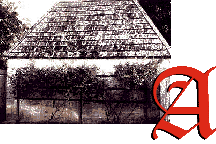 By Vanessa Slade and Christy Fischer The City soon became a center of Spanish control along the eastern seaboard, but eventually went back and forth many times between Spanish and English rule. Its colorful history includes episodes such as being burned by Sir Francis Drake in 1586, and the building of the enormous Fort Castillo de San Marcos in 1595. Another fort, Matanzas, was completed in 1742. Both are open to the public.
There's a wonderful sense of antiquity to be found here, and there's naturally lots to see and do. Fascinating walking tours of the Oldest City, led by guides in period costume, take you down the narrow streets. In fact, the whole downtown area, comprising 144 blocks, is a treasure trove of beautifully preserved historical sites, tracing American history back to its earliest days. Some of the most popular sites are:
The Oldest Wooden Schoolhouse (1763) Spanish Military Hospital ( 1791) Ponce de Leon's Fountain of Youth (1903) Mission of Nombre de Dios (1565) Narrated sightseeing tours are also available on delightful open-air trolleys or antique trains and horse-drawn carriages, and cruises are available on scenic Matanzas Bay. Of course, any mention of St. Augustine must include Ponce De Leon's quest for the "Fountain of Youth." This fascinating National Archeaological Park contains foundations and artifacts from the first St. Augustine mission and colony, the Landmark Spring, the Cross of Discovery, burial grounds of the first Christian Indians and a planetarium. There are over 40 annual festivals and events, many featuring costumed historical re-enactments that are great fun to watch. Dining
St. Augustine has restaurants and bars on almost every block of the historic old city. Eat at one of the many colorful area restaurants like Harry's, A1A Ale Works, or the Conch House. Afterwards take a stroll along the riverwalk in the evening's scool ocean breeze. Shopping Finding St. Augustine
Living
& Playing in St. Augustine
f you are thinking of re-locating to the area, there are numerous subdivisions, andcondominiums in the area, along the St. Johns River, or the beaches -- Vilano Beach, and Crescent Beach. Two of the better knowndevelopments are Ponte Vedre, and the St. Johns Project.
One of
the splendid things about living in St. Augustine is that although the
area is small, there are no lack of amenities. You will never feel isolated
in this relatively small community (only 100,000 people) with its 7 golf
courses, 32 schools, 5 conference facilities, close proximity to 200 restaurants,
2 upscale large communities, several major corporations, a world-class
historic district, and lots of cultural opportunities. |





